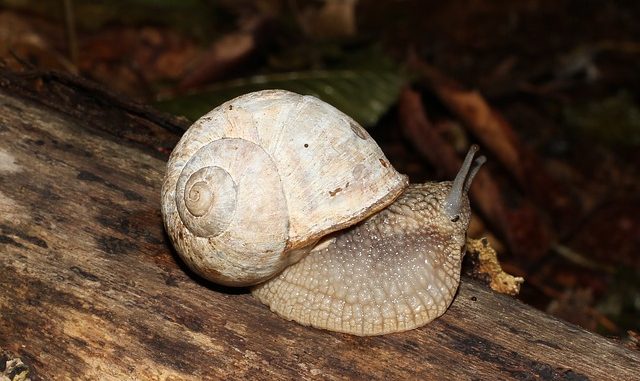
Snails are probably not at the top of everybody’s fine dining experience. They have however been revered as a delicacy for centuries. In Italy they are known as lumache and were eaten by the Romans in great numbers at their feasts. A number of species were consumed. There are many stories in Roman literature which define the delicacy of their flesh, how they should be kept and where the best ones came from.
Pliny certainly wrote about snails. the best ones came from the island of Sicily, from the Balearics such as Majorca and more locally to Rome, from the island of Capri and the coast of Liguria. Illyria produced the largest but possibly not the best flavoured. So many were eaten they were farmed as if being fattened like dormice for the dinner table.
Elizabeth David in her 1954 book ‘Italian Food‘, quotes a phrase from Figueir in his book ‘The Ocean World‘ (1868). He discusses a snail soup.
“At Naples a soup made from Helix memoralis is sold publicly to this strange population with which the streets of that city swarms, for the King’s pavement is their bed-chamber, dining-saloon, and workroom”.
I’ve seen the large land snails which were once on the menu in old Roman villas. Chedworth in Gloucestershire appears to have a few which still live locally.
Preparing the Snails
Snails are best fed on various plants including herbs before being used. The snails are starved for a fortnight before being eaten which seems extreme but unfortunately a necessity. The slime and ooze as it is described must come out otherwise the snail tastes muddy. They are usually wrapped in a cloth and kept in a basket. I imagine they move about and can easily escape. The cloth must be changed regularly as their excrement is apparently quite revolting. The snails are soaked in salted water with some added vinegar to drop the pH for 3 hours. Use running water to wash away the scum and dirt.
All snails are cooked in a broth of salt and herbs for up to 1.5 hours. White wine and some bay leaves are added to the broth to produce extra flavour. The broth is strained off. The snails are removed from their shells with a pin. A hard little black piece at the end of their body must be removed. The snails are now ready !
Elizabeth David has a recipe for Lumache In Zimino (Stewed Snails) in that book mentioned earlier.
Ingredients
- 1 or 2 tbsp. good quality olive oil for frying
- 1 onion, sliced
- 2 or 3 cloves of garlic
- 2 sprigs of rosemary and parsley
- 1 or 2 heaped tablespoons of fresh mushrooms or dried reconstituted mushrooms.
- Salt and pepper to taste
Preparation
- Heat the olive in a casserole dish.
- Add all the ingredients in no particular order. Caramelise the onion slightly.
- Cook the snails (which are shelled) for 10 minutes.


Leave a Reply